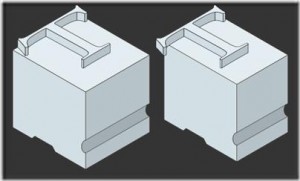
[icopyright horizontal toolbar]
Tracking
There are two basic methods to change the original side-bearing of glyphs, tracking and kerning. Tracking causes the uniform increase or decrease of all letterspace within a block of text. In Word, it is known as condensing or expanding text. Tracking is really a blunt instrument, useful to the extent that a given font must be fitted into an arbitrary space. Here is an example of normal, condensed and expanded text, respectively:
Kerning
Kerning is to tracking as surgery is to butchery. Both have their uses but are not at the same time. Kerning, derived from the word for “corner”, is defined as adjusting the space between a given pair of letters. It is used only within a proportional font. Why bother? In human beings, the eye is very perceptive, and is not impervious to the subtle joys a well-kerned word can bestow. For example, take the letter-pair A and V. In a monospaced font like Courier, there is no overlap between the two characters:
Notice in the above Courier letter pair the lack of overlap between the right base of the A and the left top of the V. Compare with a kerned Century font — the letterspace between the two characters is reduced:
See how the right serif of the A aligns below the left serif of the V. Kerning is more pleasing to the eye, and that’s the reason anyone bothers to do it.
Kerning Tables and Classes
A kerning table lays out the kerning between any two letter pairs. In a more recent development, letters that have the same kerning characteristics are now encapsulated into a kerning class in which all members share the same amounts of kerning. For instance, imagine W and V on the left, a, o and e on the right — they form a class in which every combination receives the same amount of kerning: Ve is kerned to the same extent as Wa. Typographic programs often feature autokerning, which automatically executes the instructions encoded in kerning classes and tables.
Aesthetically, one should kern modestly and consistently. Too much kerning is as bad as no kerning at all, and inconsistent kerning is even worse. Rather, a light hand and enlightened eye is called for. This implies that kerning classes and tables are only a starting point; an experienced font creator will usually fine tune the results to increase the pleasant yet delicate effects of kerning.
This article rendered in Crimson 10pt.
Copyright 2011 Eric Bank, Freelance Writer